Curd / Yogurt Rice Recipe (Thayir Sadam)
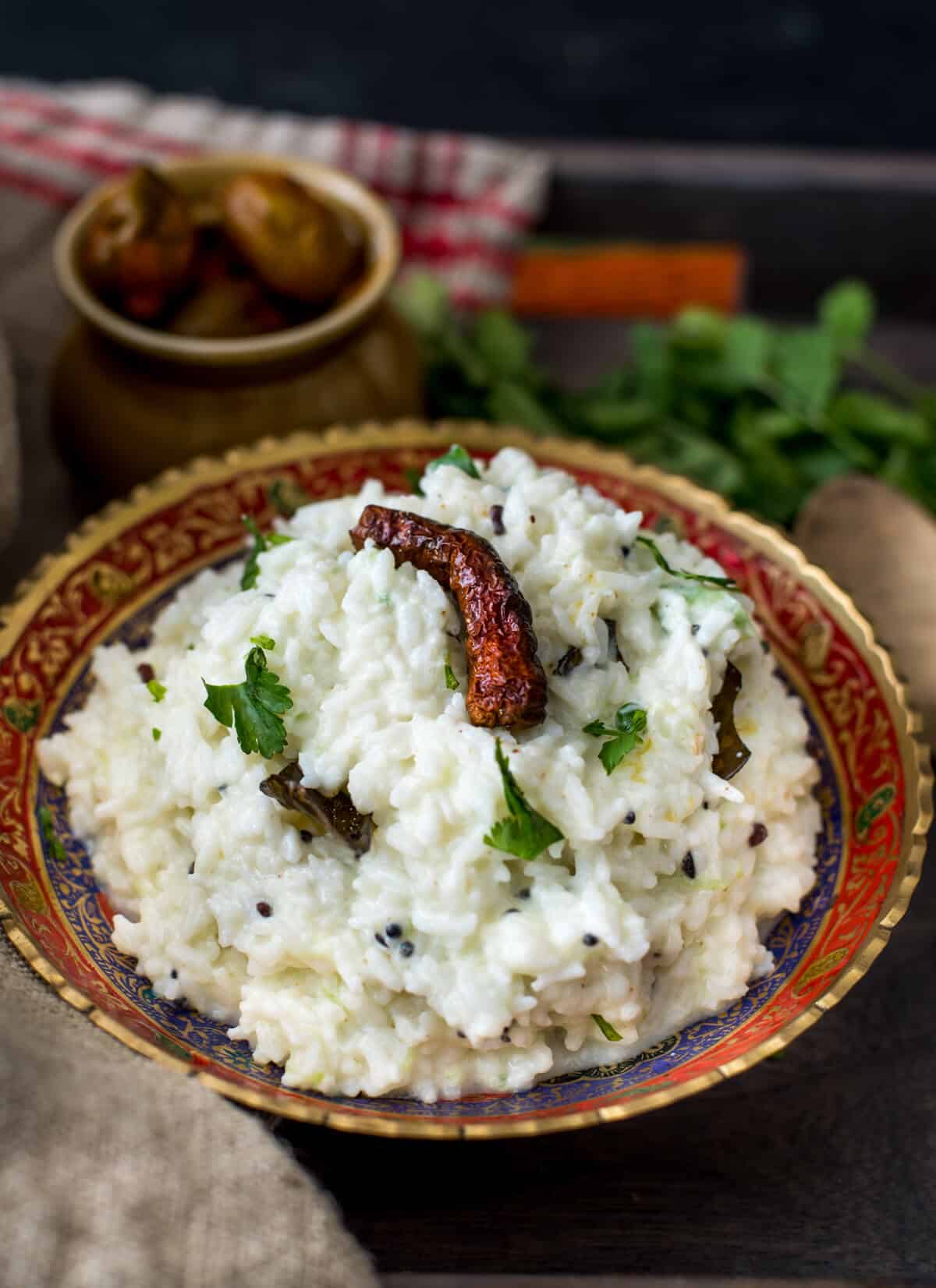
The soft-hued and mild-flavored South Indian curd rice (also known as thayir sadam or yogurt rice) is a keeping finale to a sumptuous spicy meal. Learn how to make this repletion supplies in under 30 minutes.

What is curd rice?
The mixture of cooked rice and curd, commonly known as curd rice or dahi bhaat, is a dish that is savored wideness India, but it is in the South that it has come on its own with a tempering that adds a soft-hued and refreshing savor to the yogurt and rice mixture.
The tempered yogurt rice version is popular in restaurants and in South Indian temples (where it is offered as a holy offering to gods and then distributed amongst devotees as prasad).
The untempered version is increasingly wontedly served in South Indian homes at the end of every meal. It helps soothe the stomach without a spicy meal; the probiotics in the curd help aid digestion, and it is perfect to gainsay the hot summer days that the folks in South India often experience.
Curd rice / thayir sadam / yogurt rice
Across southern India, curd rice is referred to by variegated names; in Tamil Nadu, it is known as thayir sadam, where thayir ways curd (or yogurt) and sadam is rice. In Andhra Pradesh and Telangana, it is tabbed daddojanam; in Karnataka, it is known as masruanna or mosaranna, and thayir choru in Kerala.
In northern and western India, curd rice goes by dahi baat or dahi chawal, where dahi ways curd and chawal / bhaat stands for rice.
Irrespective of what it is called, the preparation is mostly the same noninclusion a few Indian spices.
Are curd and yogurt the same?
No – yogurt is commercially produced, whereas curd is homemade.
Both curd and yogurt are made by humid and then cooling the milk surpassing subtracting a bacterial culture to it.
The difference is that homemade curd contains only one strain of yes-man (Lactobacillus), whereas commercially prepared yogurt usually has two strains of yes-man (Lactobacillus Bulgaris and Streptococcus thermophilus).
Since yogurt is commercially prepared and under controlled conditions, the end result is standardized and has the right value of bacteria. The bacterial strength of homemade, fresh curd may vary from one household to the other, depending on the culture used.
Having said that, you can substitute curd for yogurt and vice versa in all recipes.
Helpful resource: Difference between curd and yogurt.
Fun fact: The term curd is mostly used in India, whereas in the US, plane the homemade ones are tabbed yogurt.
Reasons to love this recipe
There are many reasons to love this linty curd rice recipe, and here are a few of our favorite ones –
- A simple yet satiating meal that takes less than 30 minutes!
- Perfect for days when you have an upset stomach – it is light on your tummy, and the probiotic in the yogurt helps aid digestion.
- It tastes unconfined plane without a few hours, making it perfect for travel and school/work lunches.
- A cooling meal or a side dish for hot summers.
My tryst with thayir saadam
I first became witting with this dish when I first had it at a South Indian buffet. I have unchangingly liked curd, so obviously, I was drawn to this tempered, linty rice and yogurt combination. I was hooked at the first bite, and I remember refilling my plate so many times that I had no place for dessert.
No regrets, though, because I totally enjoyed it.
Health benefits
There are many health benefits of curd rice, and the most worldwide ones are that it aids digestion, and has a soothing and cooling effect on the body. It moreover contains probiotics, antioxidants, and salubrious fats, and that’s why it is expressly recommended for people who have an upset stomach.
Here’s what you need to make the recipe
Ingredient notes/swaps
- Cooked rice – Sona masoori rice or Basmati rice works best. You can moreover use brown rice as a substitute. You can moreover use leftover cooked rice for this recipe. Sprinkle a few tablespoons of water first and microwave it for 30 to 60 seconds until it has softened a bit.
- Yogurt / Curd – You can use storebought or homemade yogurt. Preferably use full-fat yogurt for weightier results.
- Whole milk – prevents the yogurt rice from turning sour without a few hours and gives it a linty consistency.
- Grated cucumber/carrots – though these are optional ingredients, I usually add them to get a dose of veggies.
- Green chilies – to add heat
- Fresh ginger, grated – for savor and its medicinal properties.
For tempering
- Ghee or oil – You can use ghee or coconut oil to make it increasingly flavorful. Any neutral-flavored oil, such as avocado or sunflower, will moreover work.
- Mustard seeds
- Hing or asafoetida (optional) – aids digestion
- Urad dal
- Kashmiri red chili (dried)
- Curry leaves
Be sure to trammels out the full recipe and ingredient list below.
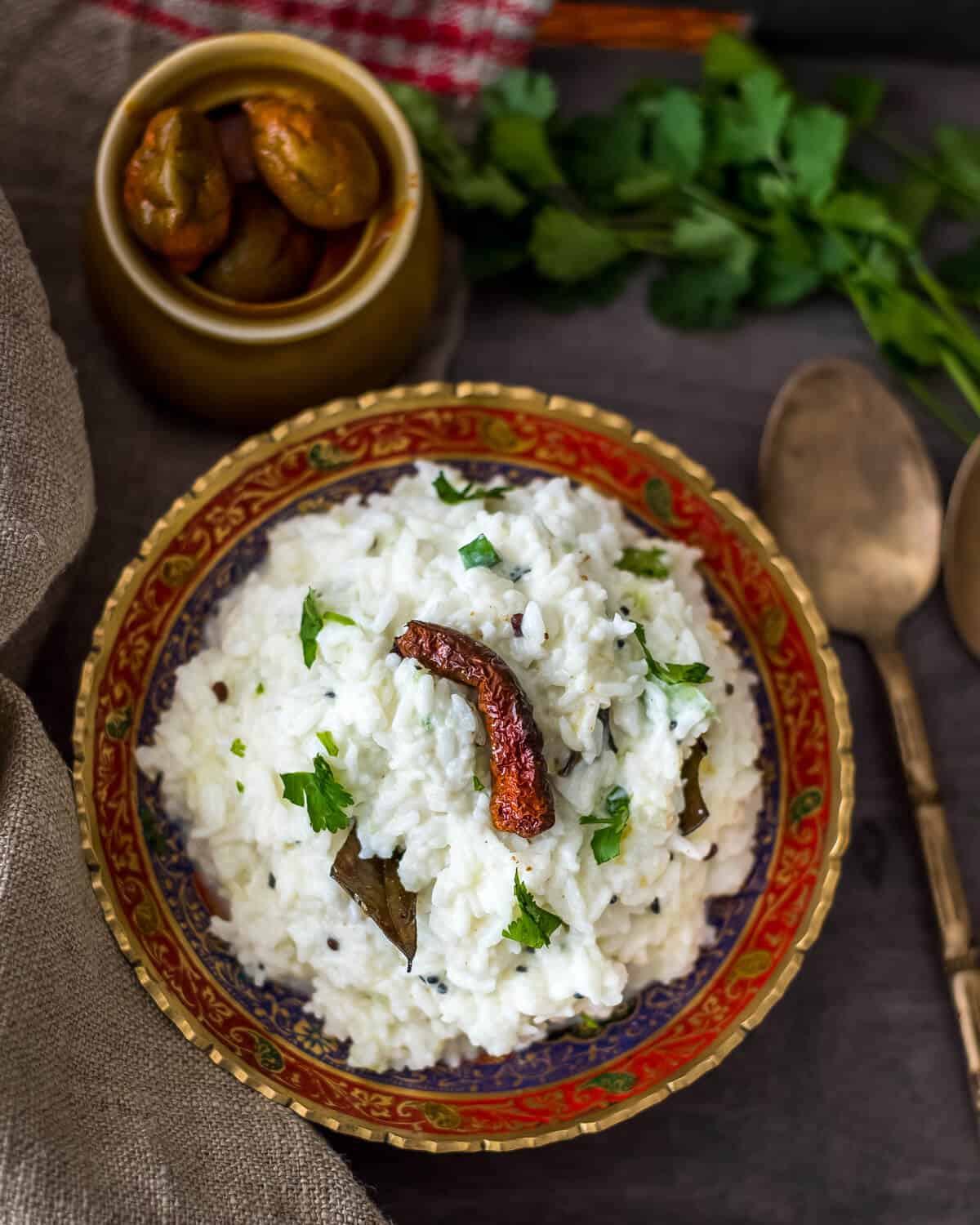
How to make the perfect curd rice?
Did you know that the weightier curd rice is the one made from fresh rice?
That is considering freshly cooked rice tends to be moister and can be hands mushed. Having said that, you can definitely use leftover refrigerated rice. You’ll have to sprinkle a few tablespoons of water first and microwave it for 30 to 60 seconds until it has softened a bit.
If you are making white rice from scratch, melt it to the point that it is overcooked and mushy by using at least two times increasingly water than usual.
Allow the rice to tomfool down, then mix it with yogurt, salt, untried chilies, and grated veggies, such as cucumber and carrots, until well combined. Traditionally, thayir saadam is made by combining the ingredients using wipe fingers till you get a lump-free, homogenous mixture. But if that is not your style, finger self-ruling to use the when of a ladle to mush the rice and yogurt mixture.
To finish the dish, mustard seeds, curry leaves, red chilies, a bit of hing, urad dal, and cashews (optional) are widow to hot oil or ghee. This mixture is known as tempering, aka tadka, which is then widow to the mashed rice mixture.
Right surpassing serving, dahi rice or dahi baat can be sprinkled with finely chopped cilantro or coriander leaves. Sometimes it is served with chopped grapes or pomegranate arils as well.
Step-by-step instructions to make curd rice
- Cook rice with scrutinizingly twice the quantity of water over the stovetop or in an electric pressure cooker such as the Instant Pot. For 1 cup of Basmati rice, use 2 cups of water; for 1 cup of Sona masoori rice, use 2.5 cups of water when using an Instant Pot.
- Pressure melt Basmati rice for 6 minutes and Sona masoori rice for 10 minutes. When the cooking trundling is complete, release the pressure. Mash the rice with a when of a ladle till it is completely mushed. Remove the inner pot from the Instant Pot and indulge the rice to tomfool for at least 15 minutes.
- Whisk yogurt with milk till they are well combined. Mix well with grated cucumber, untried chilies, salt, and grated ginger.
- Add the yogurt mixture to the rice and mix it by hand or use the when of a ladle.
- Add oil or ghee to the tadka pan kept over medium heat.
- When the oil is hot, add mustard seeds and asafoetida. Once the mustard seeds start to sputter, add urad, red chili, and a sprig of curry leaves.
- Let them sizzle for well-nigh 10 seconds, and then pour this mixture over the curd rice mixture. Garnish with cilantro and mix well.
- Serve accompanied by lemon or mango pickle and/or papads.
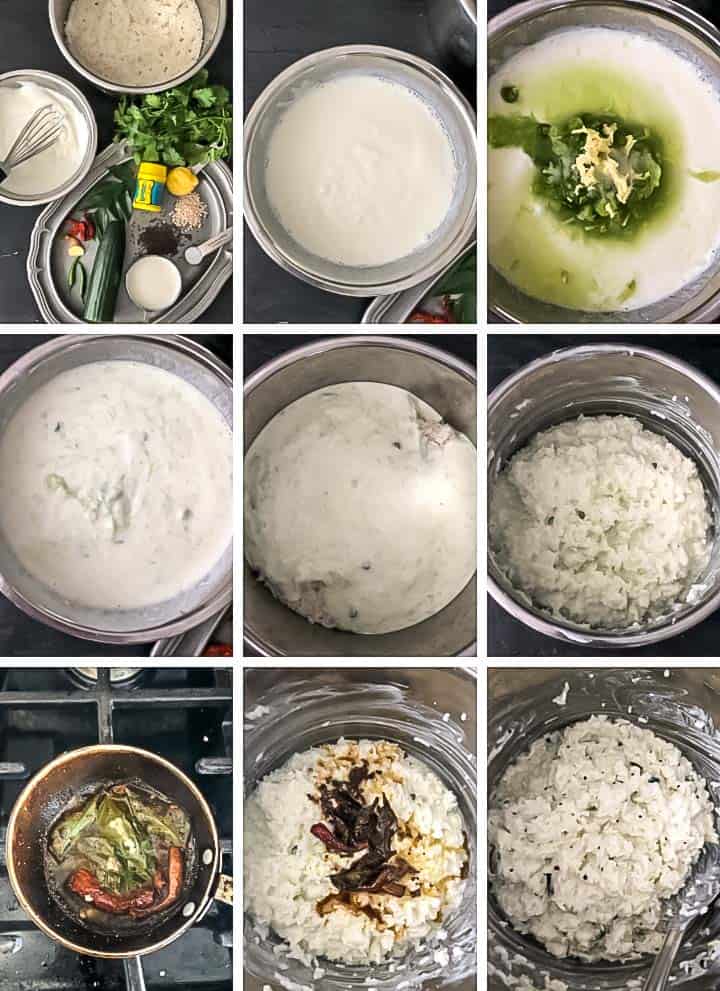
TIPS
- Cook rice with scrutinizingly twice the value of water – this overcooks and softens it, making it easier to mush. [See the recipe vellum for instructions to melt Basmati and Sona masoori rice]
- Freshly cooked rice tends to be increasingly moist and can be hands mushed; that’s why it is usually preferred. If you are using refrigerated leftover rice, sprinkle a few tablespoons of water first and microwave it for 30 to 60 seconds until it has softened a bit.
- Cool rice for 15-20 minutes surpassing mixing it with curd. Mixing hot rice with curd will lead to curd breaking lanugo and rhadamanthine grainy.
- Add whole milk: Milk helps reduce sourness and gives this curd rice a linty texture. It is okay to skip it if you plan to eat within a few hours.
- Use store-bought or homemade ghee to add increasingly savor to the dish.
- Use creamy, full-fat, fresh yogurt for weightier results.
Substitutions/variations
- Substituting white rice – You can moreover make it with brown rice or quinoa instead of white rice.
- Fruits and vegetables – grated carrots, cucumber, or grated untried mango make unconfined additions to this dish.
- Tempering – You can add halved cashews to the tempering, and if you don’t mind a hint of sweetness, finger self-ruling to add golden raisins. Fry the cashews till they are golden brown, and then add raisins. Turn off the heat when the raisins start to plump.
- Garnishes vary from household to household, but chopped cilantro, halved grapes, and pomegranate seeds are the most common.

Storage tips
Refrigerator: This South Indian curd rice can be stored in the refrigerator for up to 2-3 days in an air-tight container.
Freezer: Frozen yogurt separates and gets grainy and watery when thawed. That’s why I wouldn’t recommend freezing yogurt rice.
Reheat: Yogurt breaks lanugo when heated, so I wouldn’t recommend heating curd rice. You can serve yogurt rice unprepossessed or at room temperature (just let it sit out for 15-20 minutes). When you refrigerate curd rice, it’ll solidify and lose its linty texture. To fix it, add a few tablespoons of milk and mix well.
How to prep ahead
You can prep superiority by cooking the rice a day in advance. You can moreover grate the cucumber and carrots (if using) and store them in the refrigerator for up to 2 days.
Serve it with
Yogurt rice is often served with a side of pickle, podi, or papad in the South. I moreover like to pair it with
- Jeera aloo – a simple potato dish tempered with jeera (cumin seeds).
- Fish chutney – A dry chutney made from fish, coconut, and tamarind with a hint of tang.
- Mangalorean fish fry – A fried fish womanliness that makes an spanking-new winger to curd rice.
- Yeti (shrimp ajadina) – a succulent side dish from Mangalore.

Frequently asked questions
You can use sour surf instead of yogurt but remember that sour surf has a higher fat content than yogurt.
Curd rice is an spanking-new meal to take yonder with you on a journey or plane to work or for school lunches. You need to add increasingly milk to preserve the consistency and to prevent curd rice from going sour. Also, if you are planning to take it for lunch the next day, hold off on the tempering process and do it the next morning.
Curd rice is unchangingly eaten unprepossessed or at room temperature. It should not be warmed or heated. On heating, the curd is likely to unravel lanugo and separate, giving a grainy texture to the dish.
While curd rice is weightier paired with pickle, podi, or papad, we love to eat it with a side of this Mangalorean shrimp womanliness – shrimp/yeti ajadina or dried fish chutney.
More succulent rice recipes
SEE ALL RECIPES
You’ll find a hodgepodge of easy-to-make rice recipes – from this succulent Chicken biryani or this wholesome khichdi. Get them here!
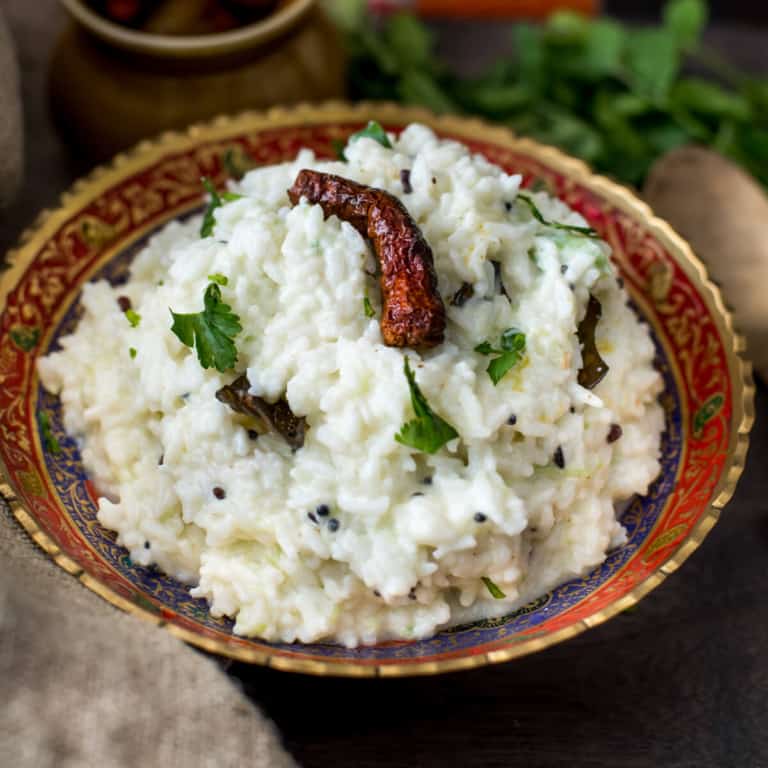
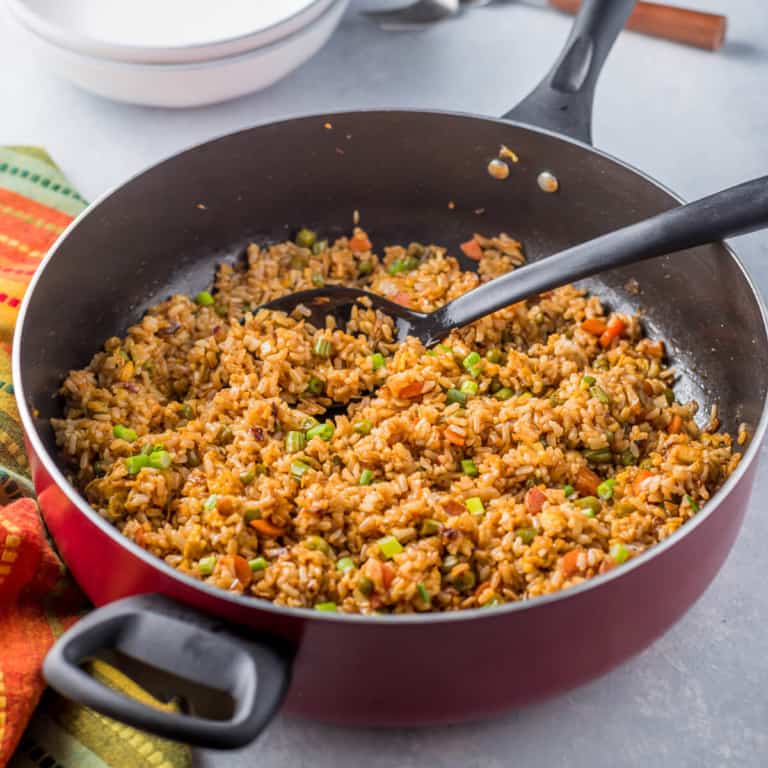
Easy Indian Vegetable Fried Rice

25 Weightier Rice Side Dish Recipes
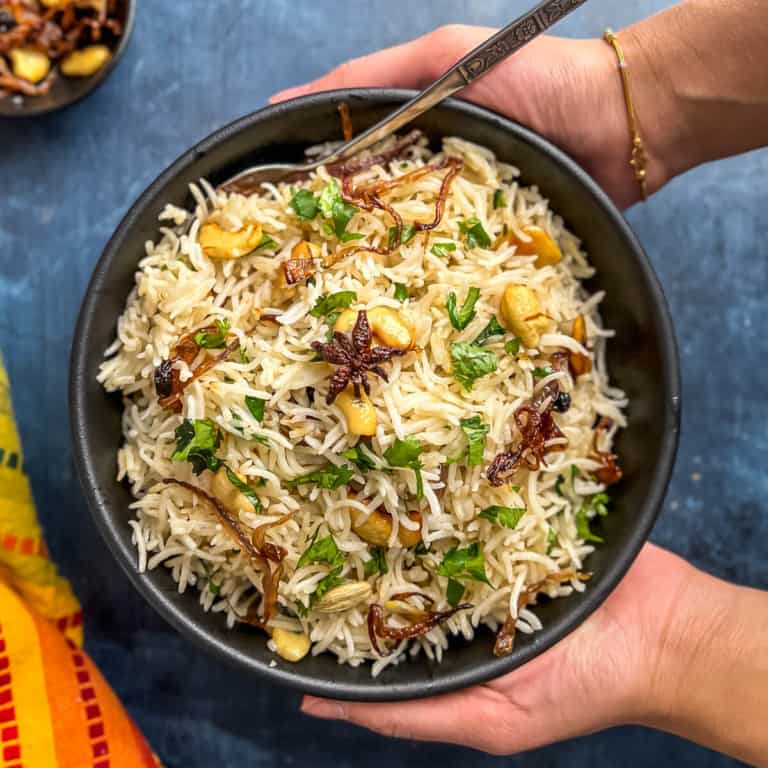
Restaurant-style Ghee rice (Neyitha Nuppu / Neyi Choru)
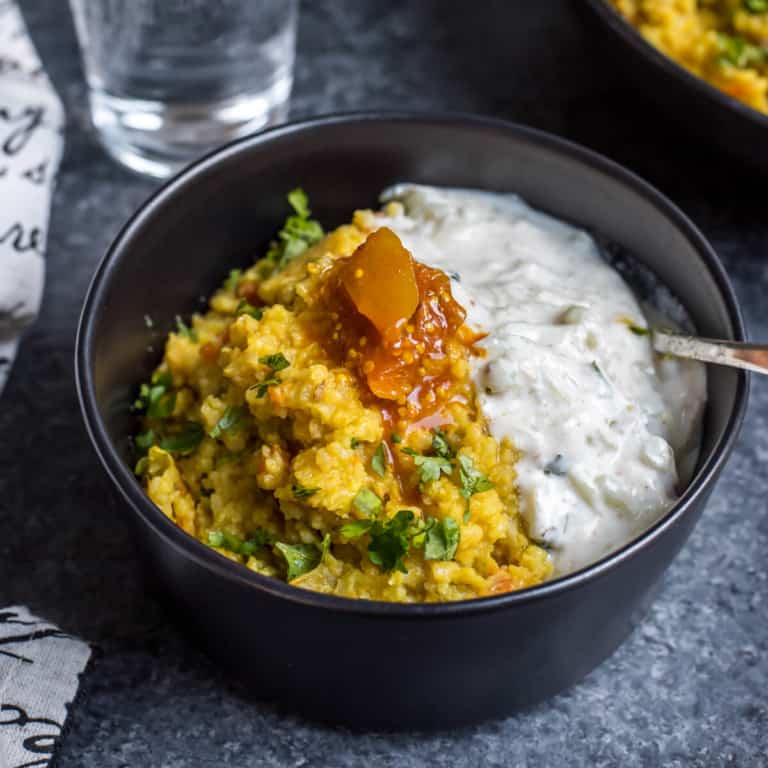
Vegetable Masala khichdi (Spiced Lentil Porridge)
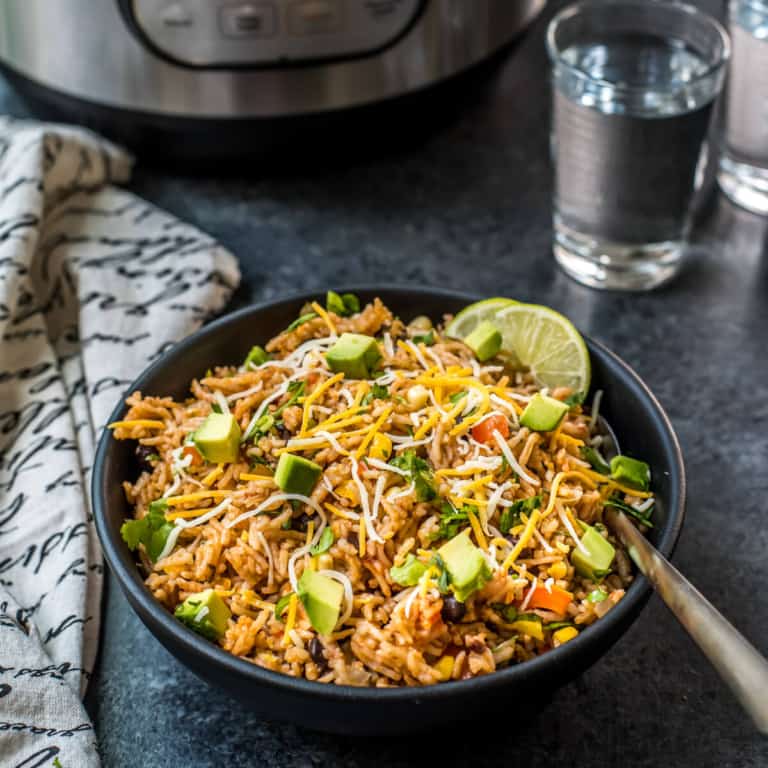
Instant Pot Mexican Rice with Beans

South Indian Curd Rice Recipe (Thayir sadam)
Equipment
- Electric Pressure cooker
Ingredients
- 1 cup uncooked rice (or 3 cups cooked) sona masoori or Basmati
- 2-2.5 cups water
- 2 cups thick yogurt fresh, preferably
- ½ – 1 cup whole milk
- 1 cup grated cucumber optional
- 1-2 Indian or Thai untried chilies (Bird’s eye) chopped finely
- 1 inch-piece ginger finely grated
For tempering
- 1 tablespoon oil or ghee
- 1 teaspoon mustard seeds
- ¼ teaspoon asafoetida
- 1 teaspoon urad dal washed and rinsed
- 2 whole zestless red chili halved
- A sprig of curry leaves
Optional garnishes
- ¼ cup finely chopped cilantro optional
- ¼ cup pomegranate seeds optional
Instructions
Cooking rice in the Instant Pot
- Rinse the rice using a strainer till the water runs clear.
- Soak the rice in twice the value of water for 30 minutes. You can skip this step if you are in a rush.
- Add water (2 cups for Basmati or 2.5 cups for Sona masoori) to the inner pot of the Instant Pot.

- Drain the rice and add it to the inner pot. Mix well.

- Close the lid and set the steam valve to sealing.
- Pressure melt for 6 minutes for Basmati rice and 10 minutes for sona masoori rice.
- When the cooking trundling is complete, unshut the lid and let the steam escape.

- Use the when of the ladle and mash the rice. Remove the inner pot from the Instant Pot. Set it whispered to tomfool for at least 15-20 minutes.

Making curd rice
- Whisk yogurt with milk till they are well combined.

- Add grated cucumber, untried chilies, salt, and grated ginger to the yogurt mixture and mix well [Note: Start with 1/2 cup milk and reserve 1/2 cup for later].

- Add the yogurt mixture to the rice and mash well using your fingers or the when of a ladle. Add the reserved milk as needed to ensure every grain of rice is moist.

- Add oil or ghee to the tadka pan kept over medium-heat. When the oil is hot, add mustard seeds and asafoetida. Once the mustard seeds start to sputter, add urad, red chili and a sprig of curry leaves.

- Let them sizzle for well-nigh 10 seconds and then pour this mixture over curd rice mixture.

- Garnish with cilantro and mix well.

- Serve immediately accompanied by pickle and/or papads.
Notes
- Cook rice with scrutinizingly twice the value of water – this overcooks and softens it, making it easier to mush.
- Freshly cooked rice tends to be increasingly moist and can be hands mushed; that’s why it is usually preferred. If you are using refrigerated leftover rice, sprinkle a few tablespoons of water first and microwave it for 30 to 60 seconds until it has softened a bit.
- Cool rice for 15-20 minutes surpassing mixing it with curd. Mixing hot rice with curd will lead to curd breaking lanugo and rhadamanthine grainy.
- Add whole milk: Milk helps reduce sourness and gives this curd rice a linty texture. It is okay to skip it if you plan to eat within a few hours.
- Use store-bought or homemade ghee to add increasingly savor to the dish.
- Use creamy, full-fat, fresh yogurt for weightier results.
Nutrition
This post was published on Feb 22, 2019, and has been completely updated with new information (images and text) on May 1, 2023.





